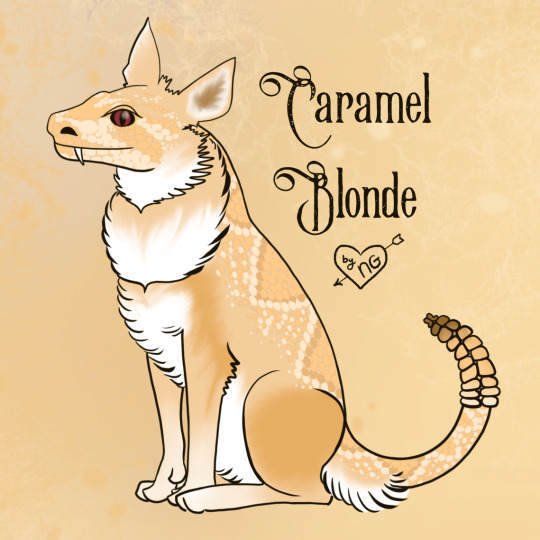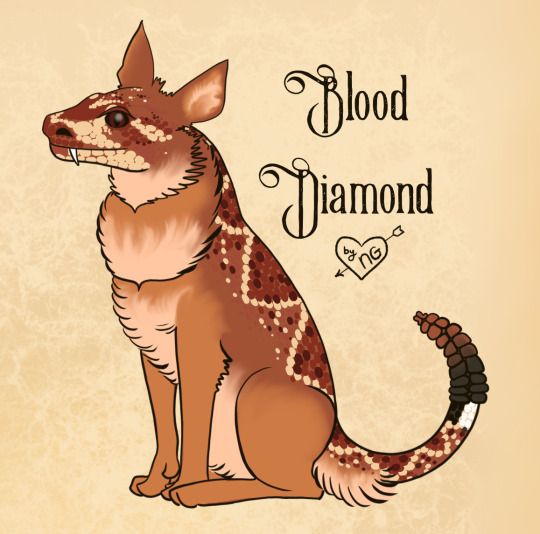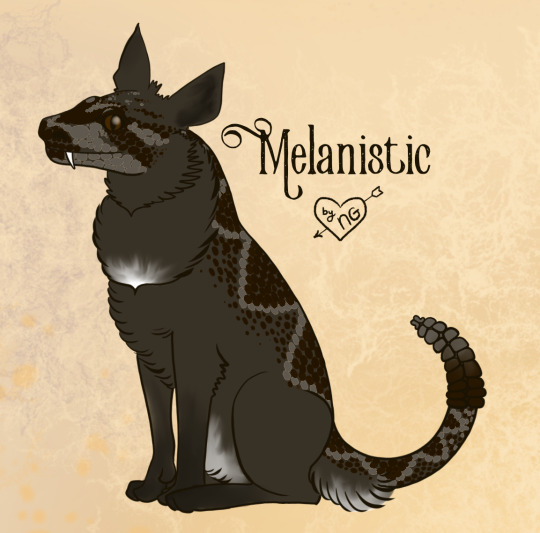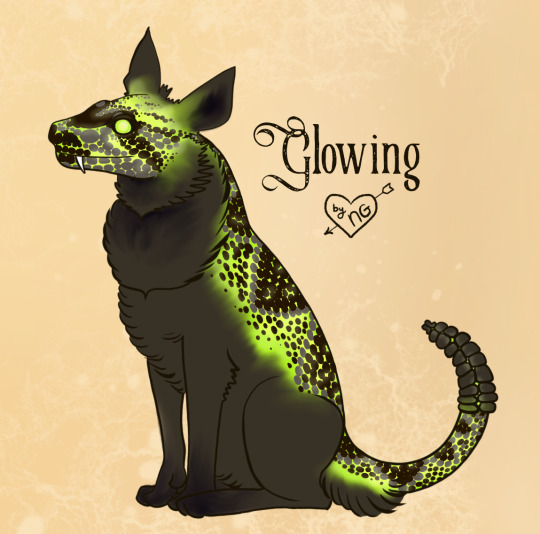Text
fallout and the "tribal" problem
I've been working on this for a while and I finally feel content enough with my thoughts to talk about it, now for reference I'm mixed first nations and Ukrainian and believe that i am at least somewhat qualified to to talk on the topic
Firstly I will break down what I'm talking about through different paragraphs, primarily based on which game the tribe originates from, and secondly, I'm not an anthropologist or historian, but simply a fan disgruntled with representation of peoples in media
I also wont be speaking on Fallout 76 as I know precious little about it, and due to its shift in gameplay and narrative elements from the rest of the games
one thing of importance though, what is a tribal, and what constitutes a tribe?
now for reference, this will be in the context of the fallout universe, as within most tribes or tribals are too broad or vague to categorize within proper definition
within the games, tribals are mentioned many times, often denoting someone who isn't from or doesn't practice the (often) majority culture of the speaker, usually these people are part of or practice a culture or tradition specific to themselves and their community, that being said, the word tribal or its plural tribals, is often used as a stand-in for "savage" or "primitive", often used insultingly, that being said this broad definition really relies on assumption and stereotypes, as there are many groups who would otherwise be classed as a tribe, such as the new Vegas brotherhood of steel, yet due to being "advanced they are classed as more than a tribe
with that in mind, the definition of tribe is quite loosely defined, a tribe could be a raider gang, a small eccentric community, a religious order or an actual unique culture. this can lead to some reinforcement of stereotypes and harmful depictions however
------------------------------------------------------------------------------
fallout 1
despite its age, Fallout has precious little in the way of harmful representation of tribes, there is some discourse on whether the people of shady sand would count as a tribe, or as "tribals", mostly due to Fallout's broad categorization of what counts as a tribe. otherwise, there's not much in the game, if anything in regards to tribals or tribes, at this point the Khans are still just a raider group, though they do take notions and snippets of historic Mongolian culture and tradition in their daily life.
fallout 2
its in 2 we begin to finally see tribes and tribals, with the protagonist specifically being from one of these tribes, the arroyo tribe, specifically descended from vault dwellers, they seem to have lost a great deal of modern ideals and information, though this does make some sense, they had to focus on survival in a harsh environment, you'll teach your children how to hunt and grow crops before small motor repair in a society without motors, that being said certain tropes can be somewhat outdated, such as the tribe building the whole temple section in regards to seemingly being an entirely sedentary culture who are also tent dwelling, which ties in with how seemingly primitive the tribe is as a whole, while some knowledge being lost makes sense, what would take generations of isolation and ack of any unique discovery to really achieve, along with some of the more mystical elements, the second part however can be somewhat forgiven as psychers and other "mystical" people do exist in canon, the mysticism plays heavily into the "indigenous people have magic" type trope. even Moreso they specifically chose to give up their culture in the end to join the ncr instead
there is also mentions of the unnamed "primitive tribe", a coastal tribe with many beliefs in regards to death and spirits throughout the world, while much of their story is cut you still meet one named tribe member and several random tribals, they are however not great examples of an actual culture, having a very cartoonish depiction and belief system, along with speaking broken English but no proper explanation of a tribe specific first language, there is however some redeeming facts as they are still looked at as people, poorly represented people
least unoffensive example however are the cave dwelling cannibal tribals, the name alone is already a mash of offensive stereotypes and depictions of indigenous people, which other tribes within the game are specifically designed to resemble, they are very unintelligent, lacking proper speech, yet are also quite strong and fast, they are every depiction of which "enemy natives" have been depicted as, making the arroyo come across as the "noble savages" in place
second to last we have the vipers, referred to as raiders, a tribe and a cult, within this iteration they worshiped mutant cave dwelling snakes, sacrificing passers by to them and welcoming in the survivors, they however did develop unique traditions and a culture surrounding the snakes before being chased from new california. its heavily unclear what a proper definition of what they are would be
lastly that brings us to the new khans, while not yet a tribe, they have changed much, keeping little in regards to khan tradition with a single leader, along with his personal guard and dog, leading to less loyalty and cohesion. at this time however the khans were fractured into many raiding bands, its actually the death of Darion that unites them once again
within 2 we also begin seeing other groups such as the shi and the yakuza, who represent real world cultures but more specifically the descendants of those cultures, which i am not knowledgeable enough to talk on
fallout 3
in 3, we don't see nearly any tribals in the base game, the treeminders are often referred to as a tribe yet they are in my opinion closer to a religious order with cultural elements, the specific titles and worship of bob and Harold are two of their defining traits at a glance, and are more reminiscent to religion in place of culture, they devote their lives to a "living god" responsible for regrowing nature in a secluded oasis, in truth the group is a cult (a mostly harmless one) and not really a tribe
another halfway example is the unnamed tribe in which the merchant crow was born to, they are specifically referred to as a tribe and have unique cultural beliefs, such as revering eyebots as wind spirits and that is all we know of them. there is literally nothing else to really say about them
finally we get to the point lookout tribals, a "tribe" of people who are sent out to find a seed pod that produces a hallucinogenic gas, to which the initiate is taken back to the tribe to be lobotomized, and in said state may be left unable to care for themselves properly, or worse, dead and those who aren't left vegetative are under the control and influence of a brain in a jar feuding with a ghoul while attempting global domination via telekinesis, as they believe he has ascended his material form and is guiding them to do so as well
not even counting the swampfolk who are somewhere between local cultists to a mutated subspecies of human, there is precious little in the way of positive tribal peoples, with an actual culture, instead getting vague and sometimes offensive examples
fallout 4
plain and simple there aren't any tribes or tribals, a fact which would ordinarily leave this section mostly blank, but i have a nitpick on that fact. my ancestors were originally from the region, the Abenaki, who were allied to other local tribes, and putting modern day tribal identity issues aside, the region had many native peoples, and there could have been an attempt at a positive depiction of a tribe, yet there's nothing, nothing throughout the base game, and all the DLC's, not even an attempt. and that frustrates me somewhat, as they could've shown indigenous people surviving and keeping their culture despite everything but instead did away with anything tribal related
fallout new Vegas
the tribes in new Vegas have such a wide array of representation, from good allegory to horrible caricatures, for instance, the tribe with the longest history in the series, the great khans, who were once the new khans, who originated from the khans. they have finally developed into a unique culture with a focus on personal freedom and and individual strength and yet also a people who believe in unity and cooperation, and they have even been given compelling motives, they are a raiding culture, people who take what they cannot find or make, similar to many real world cultures, they have a history of ethnobotany, something that was enough for the followers of the apocalypse to take notice, they had tradition and honours, and their plight is somewhat reflective of the real world, their non combatants and innocents, gunned down, and the survivors left to pick up the pieces, trying to handle their trauma from the experience, and turning to the substances they sell in order to numb the pain. the great khans aren't necessarily good people, but they are displayed as a genuine people, suffering from the actions of a colonizing power, and that is some of the best representation of native history in recent history.
the boomers are a tribe dedicated to personal security, taking the belief of right to bear arms as a cultural motto, thy originate from an armory vault, and completely shun the outside world. they refer to themselves as a tribe and have unique customs that have formed from their unique lifestyle, all things considered they make a good bit of logical sense in universe and in their formation. there isn't however much more to say on their existence as a tribe.
we even meet several new California raider tribes, the remnants of the vipers, pushed into the Mojave by ncr expansion, they've lost much of their culture, turning to chems and raiding, along with the jackals, they have been reduced to cannibalistic chem addicts, and in all honesty canon fodder, which does bother me slightly less, as theyre not the sole "tribes" within the game, i personally believe there couldve been some more done to show some of their history but they do fit the niche they were designed for
Honest hearts tribes are, rough to say the least, one descended of indigenous people with a unique culture and traditions, and another descended of children who may have been going to a residential school type institution (the lore is vague) who are origionally from a country who has been under the thumb of imperious countries for centuries, such as spain and the us, and yet what little culture they get is a mixture of hodgepodge words from several languages and just oddly spoken English (something historically done to mock native languages), the tribes don't have any real leadership outside of two Mormon missionaries, the two people, who could give us an example of the culture and values are devout followers of these Mormons, one who is being shown to be following in the footsteps of his hated enemy, this being Joshua graham, who is clearly a parallel to Caesar, making a peaceful people into his warriors, to deal a blow to the man who betrayed him, or Moreso a tribe who wish to follow Caesar, not for the safety and peace of the canyon system these people inhabit, but from vengeful hatred, using religion as an excuse to commit bloody war and Daniel, who spends his days infantilizing a culture and treating them as uninformed children, going as far as to hide the death of certain tribes members who had been evacuated from the area from their families and claiming a group of adults, who survive and thrive, being incapable of making their own decisions, as well as all that nonsense, the "good endings" involve fleeing their native lands and worshiping a Mormon missionary as a god, all that being said, the tribes are far from a good depiction. the khans are a much better example of native people than the tribes implied to be actual native peoples
the sorrows, a fitting name for the tribe, originating from a group of stranded children, they are a culture of pacifists who also hunt the largest mammalian carnivores in the region and are deemed "too innocent". the main member we meet near idolizes Daniel, the resident missionary, though this is somewhat understandable as he saved her life while in labour. this presents as a moral dilemma however as we are tasked with withholding the information of her murdered husband and her traumatized children from her, for the benefit of Daniel himself. the other major tribe member we meet is the shaman, who speaks next to nothing, sends us on a "vision quest" via hallucinogens where we fight a great evil being, and receive a marker of tribal status, the tribes primary defining symbol, a Yao guai gauntlet. the whole quest has bad vibes of white saviorism's, especially as if you rush through, you may not learn any actual meanings behind it. you may not even learn that the sorrows have domesticated gecko's. there is the basis for such a unique culture but everything is left so barebones, the tribe doesn't even have actual homes, the entire tribes clothing looks identical, and they have no clear leader, social hierarchy or even defined equality or individualism. there's no sense that they are anything more than a dozen people existing in the same place while ignoring one another. and the endings they get are either to leave, to stay and maybe learn mercy or become aggressive and warlike, all based on the actions of one person, who in their "naive" "innocent"z minds taught them their first act of violence, making them crave more
the dead horses irk me, they are implied to be descended of the Navajo, but aside from language hold no real ties. failed chances to represent native people as surviving cultures theres many things that irk me, they are named for the area in which they live, but hold precious little in regards to horses as a whole, an animal that had become important in their ancestors day to day, they are hunters and foragers, keeping an eye on local environments and the animals within, but have no cultural inclination to herding, something that was their ancestors lifeline, they have a language based on Navajo but next to no cultural identifiers, instead they are shown to tattoo themselves to mark special occasions and important moments in ones life, they have coming of age ceremonies and traditional weapons, personal and cultural taboo's and that's it, its not clear what their homes are like, what their day to day is, if they're agrarian or semi nomadic, they are designed to be the "brave warriors" to the sorrows "peaceful savage" trope, and the main warriors against the "evil tribe", its all face value
the white legs, the evil tribe who don't know how to craft, to farm, to build, a tribe whose sole survival supposedly hinges on the availability of raiding and killing, who are presented as too dimwitted and are offering themselves up to Caesar on a platter, they are the stereotypical enemy tribe, they are canon fodder for the courier to valiantly kill, and either doom them to death right away, or leave them to the mercy of another tribe, either way ending in death. their whole point was to be a culture wiped from the face of the earth
the 80's are a territorial tribe who we know nothing of, outside of their location near the salt flats of salt lake city, their whole existence was to destroy the last of the white legs. there is nothing else to them
in new vegas, we hear the names of many dead tribes, the hang dogs, the twisted hairs, the twin mothers, cultures wiped out and assimilated by the legion, as well as tribes pushed to extinction via people like prospectors, and land owners, killed for the local resources. these two examples are both instances id like to talk about in greater detail in their own post
new vegas tribes, the 4 tribes of new vegas themselves, the three families of the strip, and the kings, each group shedding tribal identity to relive old world "glory", the kings, worshipping a misunderstood depiction of elvis, and living by the rules of an impersonation school, which they turned into a "gang" identity, keeping order of the rabble and the unwanted. the white glove society, the omertas and the chairmen, all under the thumb of mr house, coerced or convinced to become the three families. we know very little of their original cultures, aside from a few names, they have wholly embraced a new identity, disposing of those who would otherwise choose the old ways
there are also cultural groups, such as the new Canaanites who aren't technically a tribe but still a different culture group to the majority culture
afterthoughts:
all in all, I find fallout has so far, had such few positive examples purposefully creating a tribal group or Indigenous allegory, the sole example is the Khans and much of the historical symbolism is lost to so many under the guise of moral vs immoral and general lack of knowledge
it is disheartening, in a world so chock full of symbolism and satire and synchronicity, that there's so little reference to how truly multicultural the world really is, of the hundreds of pre-war tribes and isolated settlements with unique traditions, there's so little within the games to acknowledge any of it
the majority of the tribes we meet are or can be canon fodder for the sole fact of padding enemy numbers, instead of deepening the narrative of old-world concepts returning to harm the present
#fallout 2#fallout new vegas#fallout 3#fallout#fallout 4#fallout homestead#fallout tribes#tribe#culture#fo4#fo2#fo1#fnv#fallout lore#fallout history#tribal
70 notes
·
View notes
Text
seasons
hey y'all, long time no see, i apologize for my extended absence, I've had quite a time of it since my last post, but I'm back, and as such i need your help.
I've got more art cooking up but I've also been working on ideas in regards to the day to day goings on, especially those goings on in regards to seasons and the changing off, as i feel like that's not something that's acknowledged enough.
where y'all come in is I like you to comment your various ideas you've had, as I'm a little lacking in ideas or inspiration, especially in regards to areas outside of Massachusetts as my home is in a very similar environmen.
id really appreciate any ideas you have to share as I'm still getting back on my feet :)
now, if you've read to here (or not ;) ) just know, you're loved, you're appreciated, and you're important
#fallout#fallout homestead#fallout 4#fallout 3#fallout 2#fallout new vegas#fallout seasons#fallout ag#fallout thoughts#fallout world#worldbuilding#fo4#fo3#fo2#fallout 1#fallout agriculture#fnv#thoughts#questions
8 notes
·
View notes
Text
food in the wasteland
this post is inspired by @newvegascowboy 's post on food in the wasteland (go check it out if you haven't read it, its wonderful), and it got me thinking, much of the world in fallout has one characteristic, in one way or another, there is always some group grasping onto the past, and i wondered how that could affect food
lots of folks hold recipes and family tradition close, and at the end of the world that's all some folks have, and with that thought i started wondering how culture would affect food and food would affect culture
a couple notes first, if yall will humour me
i wont be covering fallout 76 or prime (for now) as i have next to no knowledge of them
the Nuka world dlc will get its own post because of unique circumstance within the setting
this wont be all encompassing, it is a collection of thoughts and notes (which yall can use as a basis for any ideas)
yall are wonderful and enjoy
comonwealth
go to meats/eggs
radstag (doe,buck,etc)
brahmin (also used for leather, milk, fertiliser)
yao guai
deathclaw
deathclaw eggs
commonwealth fish
horseshoe mirelurk (young and adult)
mirelurk hunter
mirelurk eggs
(supposedly iguana and squirrel)
clam/oyster (farharbour item called oyster bucket, implies shellfish in general area (all other animals drop meat but it is less appealing or too much effort for everyday people)
major crops
mutfruit
razorgrain
tato
gourd
melon
carrot
corn
tarberry
all fresh variants aswell
foraged plants (food/medicine)
hubflower
bloodleaf
brain fungus
wild carrot flower
glowing fungus
wild gourd blossom
wild tarberry
wild razorgrain
wild mutfruit
wild corn
thistle
wild tato blossoms
silt bean
wild melon blossom
ash blossom
mutated fern flower
theoretical cooking components
butter
cheese
seed oils
tallow (brahmin or yao guai)
maple syrup/sap (maple trees are found in the commonwealth)
pre-existing recipes + theorized realworld components
noodles (ramen made by takashi): razorgrain noodles (alkaline water+razorgrain flower) cooked in broth (brahmin likely), may have additions
molerat chunks: cubed molerat fried in seasonings
radscorpion omelet: radscorpion egg mixed with milk, fried and filled with preference
stingwing filet: fileted and fried stingwing
yao guai roast: yao guai meat, cooked in a thin layer of water in a covered pan, cooked with chopped carrots and tatos (maybe some kind of seasoning or something)
radstag stew: cubed radstag, stewed with cubed gourd and chopped tatos, cooked with a splash of vodka (maybe other seasoning+carrots)
squirell stew: chopped squirell, stewed with chopped tato and carrots, seasoned with bloodleaf
mirelurk cake: chopped mirelurk mixed with mirelurk egg and day old razorgrain bread, fried in thin layer of oil
deathclaw wellingham: heat milk, razorgrain flour, and cheese in a pot till melted and thick, dice/grate tato's, after which mix them in then put to side to cool, mix deathclaw eggwhites till stiff, and fold into cooled-down mixture, place in can and bake
vegetable soup: cook vegetables and seasoning of choice till water becomes broth and vegetables are soft
deathclaw omellet: mix together a deathclaw egg and milk, dice carrots and or mutfruit for filling, fry and fill
sweetroll: mix milk, butter, razorgrain flour and an egg of your chosing, and bake into a small roll, cover with a sugar based glaze of choice
mirelur omelet: mix mirelurk egg with milk, fry and fill with prefference (like mirelurk)
pretty much any meat: fried/grilled/poached (use common sense)
moonshine: bobrov secret recipe
possible local foods
marinated roast beef
"lobster" roll
clam chowder
baked silt beans
clambake
yankee potroast
baked fish
boiled mirelurk
maple anything
fried clams
seafood soups
homemade razorgrain bread/rolls
new england boiled dinner
homemade doughnuts?
vodka
mutfruit cider/wine
wines made from most fruits
cornmeal breads
gravies
mashed tatos
boiled tatos
cooked/boiled vegetables
vibes of the food
hardy food, mostly local with a lot of proteins and carbs, stuff that lasts, especially through the winter. diamond city and goodneighbour have more high end food, good cuts of beef, venison and even deathclaw are found in the markets, takashi toils over hardy broths and succulent mirelurk paired with glowing fungus, fresh breads and high end cooking, down south and along the coast, theres lots of fish and mirelurk on the menu, small house gardens, while to the north there are many orchards, and fields, small by prewar status but mind blowing to folks who come from dc way, central boston is home to more merging of the local diets, but much more pre-war food, folks scrounge for food more than grow it. the food is almost reminiscent of the colonial days, lots of dried or canned goods
the island
go to meats
rad-rabbit
erratic/island radstag
yao guai
fog crawler
hermit crab
mirelurk
mirelurk hunter
commonwealth fish
mackrel
haddock
angler
barnacle
dolphish (dolphin creature)
wolf
clam/oyster (farharbour item called oyster bucket, implies shellfish in general area
crops (most likely to br grown on island)
corn
tatos
carrots most crops are likely shiped in, as growing conditions are rough
foraged plants
aster
black bloodleaf
blight
cave fungus
lure weed
raw sap (maple)
wild gourd (blossom)
wild mutfruit
wild carrot
hub flower
wild tato (blossom)
wild corn
silt bean
mutated fern
razorgrain (found growing feral)
theoretical cooking stuff
tallow
dolphish blubber
syrup (made from sap)
pre-existing recipe + theories of contents
chicken noodle soup: chicken thigh cooked with chopped carrots, razorgrain or cornmeal noodles and seasoned with black bloodleaf
ground molerat: cooked ground molerat meat
gulper slurry: gulper innards stewed with carrot and tato, seasoned with black bloodleaf
wares brew: alcohol distilled from sap
the captains feast: yao guai roast cooked with tato and carrots, cooked in vodka and seasoned with black bloodleaf
sludge cocktail: mix condensed fog, blight and water
seasoned rabbit skewers: fried rabbit and skewers seaoned with aster, black bloodleaf, lureweed and blight (fried in oil, oil coated rabbit as its cooked)
resilient sludge cocktail: condensed fog, bloodbug meat and rad-x
mirelurk jerky: dried mirelurk coated with tarberry juice
wolf ribs: rib meat of a wolf, seasoned with lureweed as cooked
possible recipes
chowder
cooked clam/oysters
boiled mirelurk
"lobster" rolls
ployes
clambake
needhams (made with tato)
mirelurk cakes
"indian pudding" made with syrup not molases
homemade "cornbread" (more bread like}
baked fish
fried fish
boiled fog crawler
cooked meats
homemade stews
fried eggs
homemade gravy
roast chicken
homebrewed alcohol
baked (silt) beans
razorgrainmeal (oatmeal stand in)
food vibes very hearty but humble, lots of seafood, meat heavy meals are meant for special occasions, salted foods are common, lots of preserved foods, very dense foods, very filling, typical of a town where you have to worry about fish people and ancient sea gods, it is the food of people who think that an easy week is half a day off after a full 50 hour work week, imported foods like mutfruit jam is saved for the guests kinda food
washington
meats
brahmin
molerat
yao guai
mirelurk
radroach
possibly iguana (iguana bits)
possibly squirell (squirell bits)
crops/plants
apple
pear
carrot
potato
mutfruit
crunchy mutfruit
cooking components
butter
cheese
tallow
pre-existing recipes + components and stuff
mirelurk cakes: mirelurk meat, eggs and potato starch, fried in oil/butter
noodles: potato starch noodles boiled in a simple broth
squirell stew: made with squirell, potato and carrots
cooked meat
possible recipes
boiled mirelurk
apple "jam"
potato bread
food vibes desperate and despair, most soil is unfarmable due to all the bombs, people eat what they catch, brahmin are sickly and produce precious little food, its inventive in a sad way, even with cleaned up rivers the fish are still unfit to eat, and will be for a while, the soil will take lots of tlc and hydroponics can only do so much, its a wasteland
the mojave
go to meats/egg
bighorner (used for milk, wool and hides)
brahmin (used for milk, fertiliser, transport and hides)
deathclaw
deathclaw eggs
gecko (used for hides too)
gecko eggs
perch
minnow
suposedly iguana and squirell (iguana/squirell bits)
molerat
crops (some imported)
crunchy mutfruit
fresh apple
fresh pear
fresh carrot
fresh potato
jalapeno
maize
mutfruit
pinto bean
foraged (and farmed) plants
barrel cactus
bannana yucca
broc flower
buffalo gourd
cave fungus
honey mesquite
nevada agave
pinyon nuts
prickly pear
white horsenettle
xander root
possible cooking components
butter
cheese
tallow
oil
chile oil
pre-existing recipes + components
brahmin wellington: brahmin steak, wrapped in ant egg puff pastry
caravan lunch: cram, instamash and pork and beans
desert salad: xander greens, topped with sliced barrel cactus, thin sliced dried brahmin meat and pinyon nuts
gecko kebab: gecko meat marinated in jalapeno and banana yucca
noodles: cornmeal noodles cooked in a broth
ruby's caserole: cornmeal crust filled with chopped molerat marinated in jalapeno and radscorpion venom
trail mix: fresh apple+pear, pinyon nuts and sugar bombs
wasteland omelet: deathclaw eg mixed with brahmin milk, filled with a mixture of blamco mac n cheese, mutfruit and lakelurk meat
possible recipes
Chateaubriand
onion rings (the strip)
ribs
cornbread
grits
tortilla
chicken fried steak
baked potato
mashed potato
homemade gravy
green chili stew
mutton stew (bighorner)
sagebrush salad
quesadilla
stuffed peppers
chile
sauted corn (corn, chiles. seasonings)
stews -soups
tamales
grilled maize
fried fish (near lake mead)
cactus fries
nopales
jalapeno poppers
sopapillas
homemade bread
homemade rolls
food vibes western-new mexico, the strip has more high end food but most of the mojave has more rural staples, very flavourful, kinda ranch food, keeps you going all day and makes you glad to come home, really homecooked vibes, lots of variations, like never ask for a recipe in a crowded room cause it will start a fight over whose grandma had the better recipe, lots of meat and vegetables, very little fish, not a lot of "pickyness" over food
zion canyon traditional
meat
perch
rainbow trout
yao guai
gecko
mantis
bighorner
molerat
plants
cave fungi
daturana
sacred datura
xander root
prickly pear
spore plant pods
bannana yucca
honey mesquite
pinyon nuts
cooking components
tallow
recipes
stews
fried meats
fried xander greens
fried fish
fried mushroom
roasted pinyon nuts
food vibes not highly intricate but somehow nostalgic, very traditional indigenous, simple in an uncomplicated way not a bad way, some of the best quality ingredients around, clean food and clean water, smoky flavors, food isn't meant to be showy or fancy, its meant to leave you full and happy as you spend time with family, its meant to be honored and not wasted
new California republic
meat
brahmin
deathclaw
deathclaw egg
gecko
gecko egg
fish
various wild game
crops
potato
onion
cabbage
maize
green mutfruit
fava bean
apple
rice
tomato
carrot
foraged
seaweed
recipes
shi rice: cooked rice served with a side of seaweed or fish
brahmin, any cut of meat grilled or fried
cornbread
grits
tortillas
cabbage soup
chile
cabbage salad
mashed potatos
baked potato
sauerkraut-coleslaw
pickled veg
jerky
mashed potato
baked potato
stews
soups
food vibes very diverse, lots of regional staples, San Francisco has lots of seafood while towns like Modoc have mostly brahmin meat and veg, Klamath has gecko, its very locale dependent ¨(out of character, fallout 1-2 is super bleak and sparse) food is often a matter of survival more than fancy, with the exemption of larger settlements and cities where imports are available and you can afford to experiment with food
#farming#fallout#fallout animals#fallout fauna#fallout ag#fallout homestead#fallout agriculture#fallout au#fallout creatures#fallout 4#fallout fauna and flora#fallout 1#fo2#fallout nv#classic fallout#fallout food#food#cooking#recipe#fallout 3#fallout thoughts#fallout farm#fallout species#fallout life#fallout cooking#apocalyptic cooking
59 notes
·
View notes
Text
Hey y’all
Hello and welcome, I just wanted to say thank you to all of y’all who’ve shown my art some love, y’all really brought a smile to my face
I also wanted to let y’all know my posting will remain spotty for a bit but fear not, when I return I’ll have some fresh art( ironically I’m in the process of revising my Brahmin lol)
I hope y’all are doing wonderful and I love y’all
#fallout creatures#fallout animals#fallout fauna#fallout ag#fallout homestead#fallout species#fallout#fallout agriculture#fallout au#fallout 4#fallout fauna and flora#fallout 3#fo4#fo1#sick#see y’all soon
9 notes
·
View notes
Text
I had a thought and I’m genuinely curious what other people think. What do y’all consider killing feral ghouls as in context to like, the real world
Personally I’d consider it like mercy, letting them finally rest
#fallout creatures#fallout#fallout 3#fallout 4#fallout new vegas#fallout ghoul#feral ghoul#ghoul#fallout homestead#fallout species#fo4#fo3#fo2#fnv#fallout au
27 notes
·
View notes
Text
#he pretty much just wanders#he helps out the other factions when they need it but otherwise he’s just living life#and occasionally knocking sense into someone lol
84 notes
·
View notes
Text
Hey y’all and welcome
Some of y’all may have noticed I disappeared for a bit, but I return and with good news
I’ve decided to revamp all my work and give y’all something more worthy of your time. I will give y’all a quick overview of what I’m doing below
New creature
New plants
My personal au
Fanon
Canon
In depth looks into wasteland life
Deep dives into factions
Asks and questions
Talking about the games
Keep in mind this list will likely grow and change at some point, this is no end all be all, so don’t be afraid to ask
Ps. if you read to here, I love you and you’re doing amazing
#fallout animals#fallout creatures#fallout fauna#fallout ag#fallout agriculture#fallout food#fallout au#fallout fauna and flora#fallout homestead#fallout species#fallout 4#fallout#fallout nv#fallout new vegas#fallout oc#fallout art#fallout fanart#fallout 3#fallout 76#fallout 2#fo4#fo3#fo2#fo1#fo76#fallout plants
20 notes
·
View notes
Text
To all the fellow Fallout fans/writers/artists in general:
A few weeks ago I found a link to a map containing all the locations and factions from the entire series (except 76)



I don’t know who created it (if anyone knows please let me know so I can credit them) but I’m very thankful to that person because this has been extremely useful to me and I imagine it will help out a lot of ppl too. It’s perfect for worldbuilding and writing in general
You can access it here
4K notes
·
View notes
Text
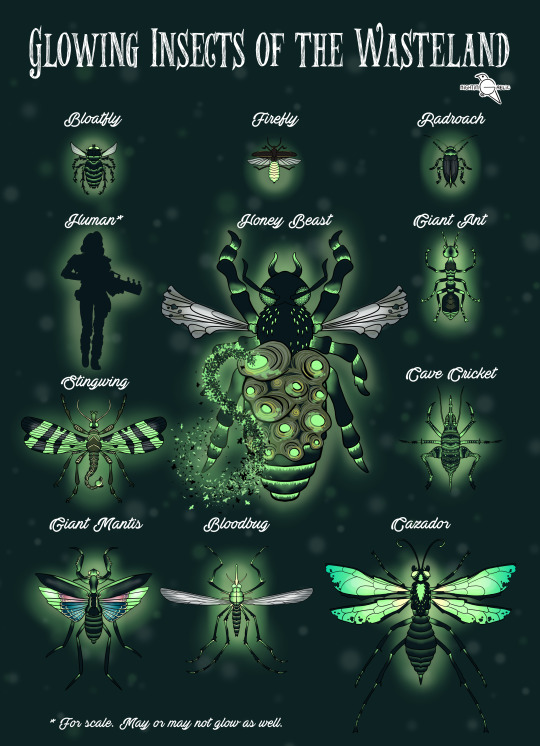
Let there be light
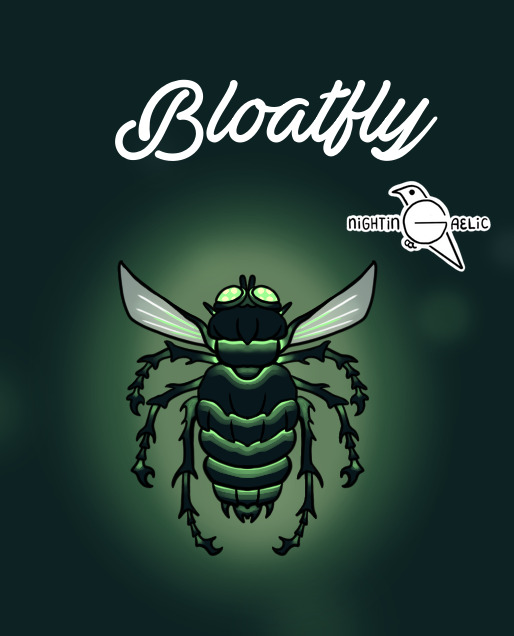
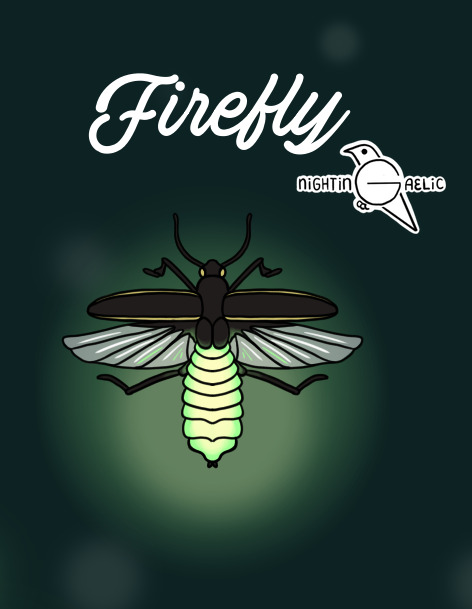
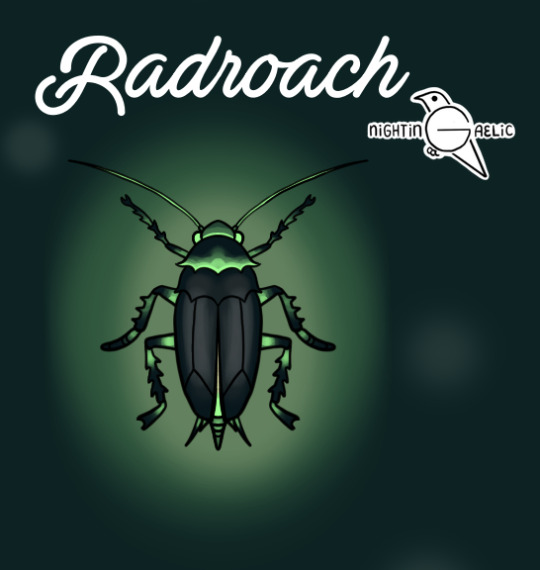

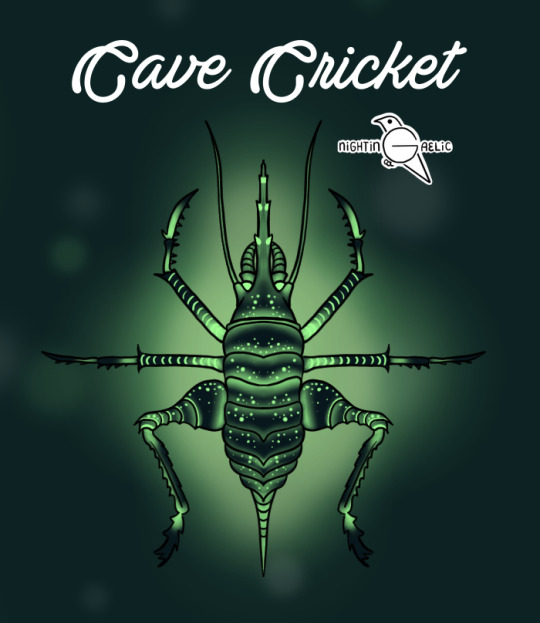

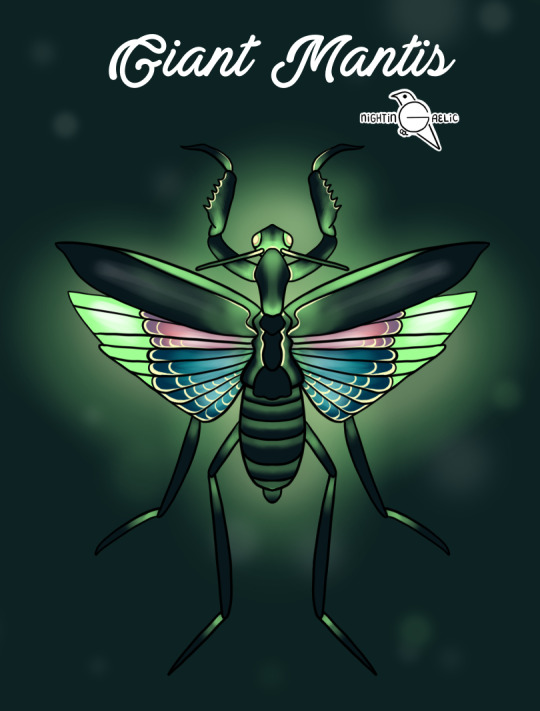
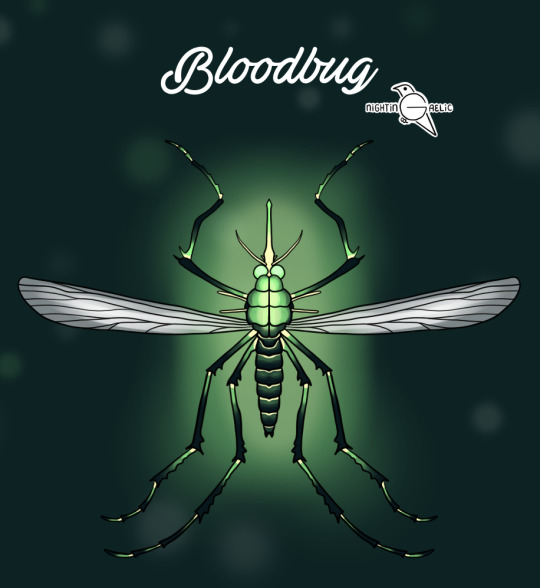
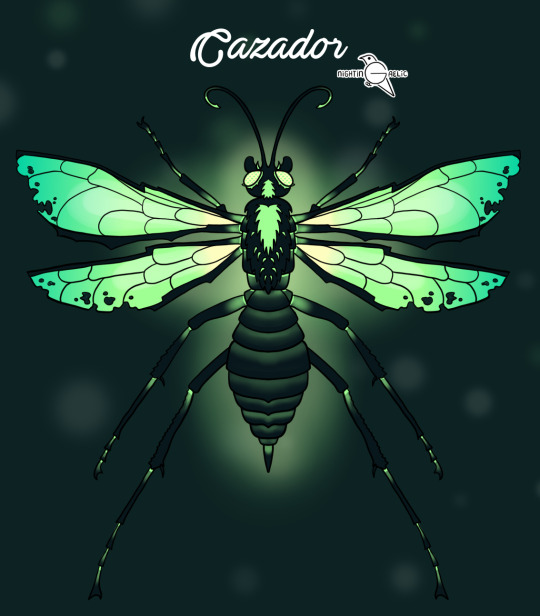
Vaultoween 2022 No. 12: "Light"
Another (bug) collection for my running tally of collections!
339 notes
·
View notes
Text
These are amazing

Ahem... moo
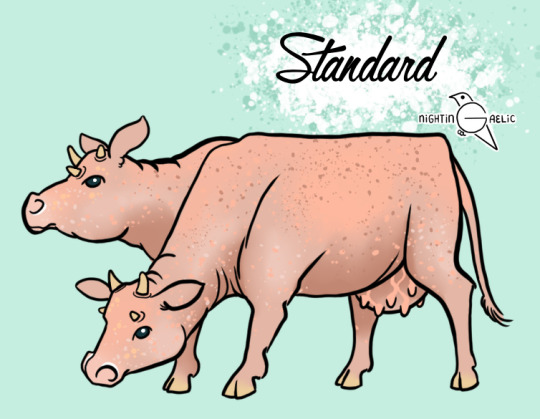


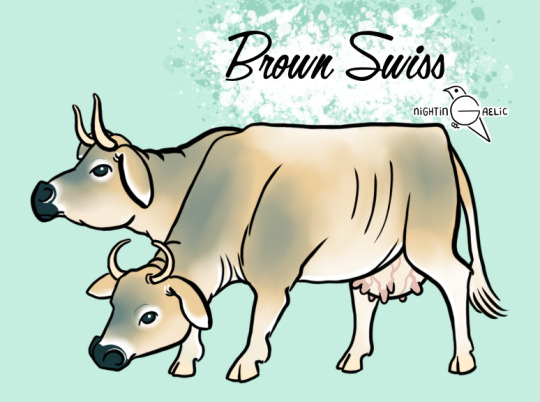




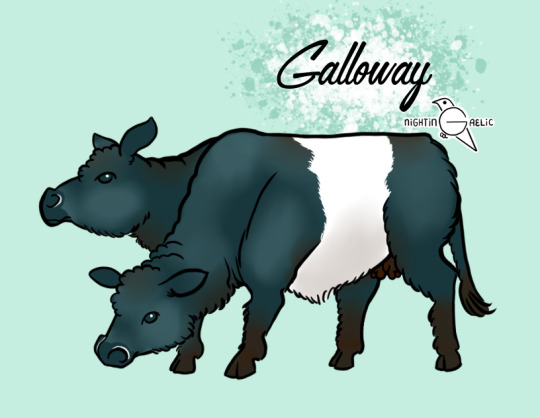
Vaultoween 2022 No. 1: "Brahmin"
Been wanting to make one of these ever since I did the night stalkers and the mothmen
1K notes
·
View notes
Text
waste iguana

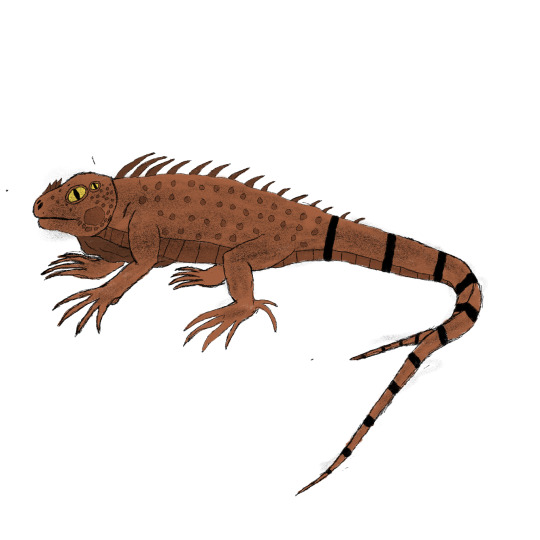
a common wasteland species and general pest, the wasteland iguana, a species found all throughout north America, is best known for how often they are food, either for people or predators,like young deathclaws, feral dogs, large birds and even very brave cats. waste iguanas are nearly at the bottom of the food chain. they feed primarily on radroaches, baby radsorpions, eggs, birds and plantlife, they often raid coops and gardens for an easy meal, which is a big part of how they became pests, another reason would be how fast they reproduce. waste iguanas lay 5-20 eggs every six months, these eggs take 90 days to 4 months to hatch depending on season and ambient radiation. young waste iguanas care for themselves from the day they hatch but will often stick close to their mothers till they are about a year old. male waste iguanas are highly territorial, often keeping territories that can be up a couple acres of land. males keep a harem of up to 20 females who nest in burrows all over his territory. waste iguanas are eaten in a variety of ways from soups and stews to grilled and fried, even their eggs are used in a variety of dishes. during the fall waste iguanas eat up to twice their body weight trying to put as much weight on as possible, as once winter hits waste iguanas hibernate in a communal burrow till spring when they emerge to feed and breed and lay eggs. there have been rumors of glowing iguanas in the glowing sea, revered by some of the children of atom cults. glowing iguanas have a radioactive bite and inedibal meat
#fallout species#fallout animals#fallout creatures#fallout fauna#fallout 4#fallout fauna and flora#waste iguana#fallout food#fallout meat
25 notes
·
View notes
Text


zebu brahmin are a common sight traveling with merchants and pulling carts
#brahmin#brahmin breeds#brahmin farm#fallout farm#fallout homestead#fallout#fallout animals#fallout fauna#fallout creatures#fallout species#fallout agriculture#fallout ag#fallout au#zebu#zebu brahmin#fallout s
45 notes
·
View notes
Text

a common sight ranging the south western wastes, a hardy source of food and caps in the deserts
#brahmin farm#brahmin breeds#brahmin#longhorn brahmin#longhorn#fallout farm#fallout homestead#fallout#fallout animals#fallout fauna#fallout creatures#fallout species#fallout agriculture#fallout ag#fallout ranch
37 notes
·
View notes
Text
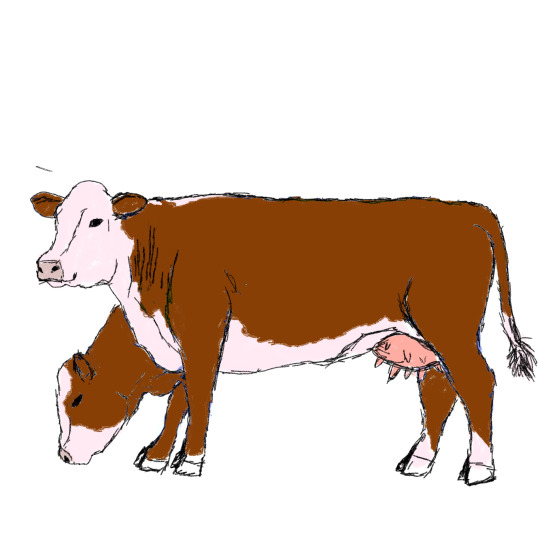
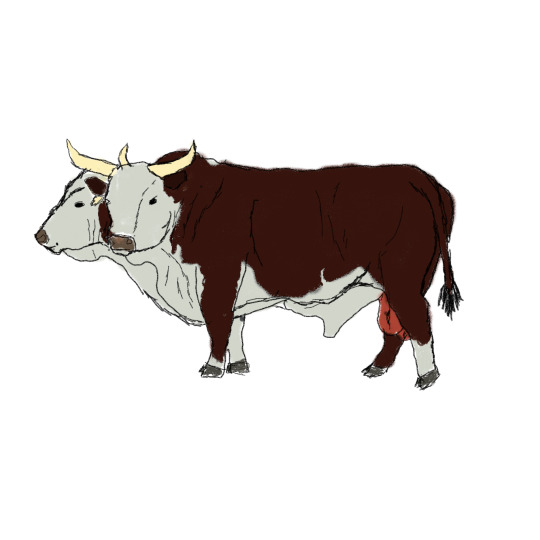
beef brahmin, a common sight ranging in the northern wastes
#brahmin farm#brahmin breeds#brahmin#beef brahmin#fallout farm#fallout homestead#fallout#fallout animals#fallout fauna#fallout creatures#fallout species#fallout agriculture#fallout ag#fallout au
274 notes
·
View notes


